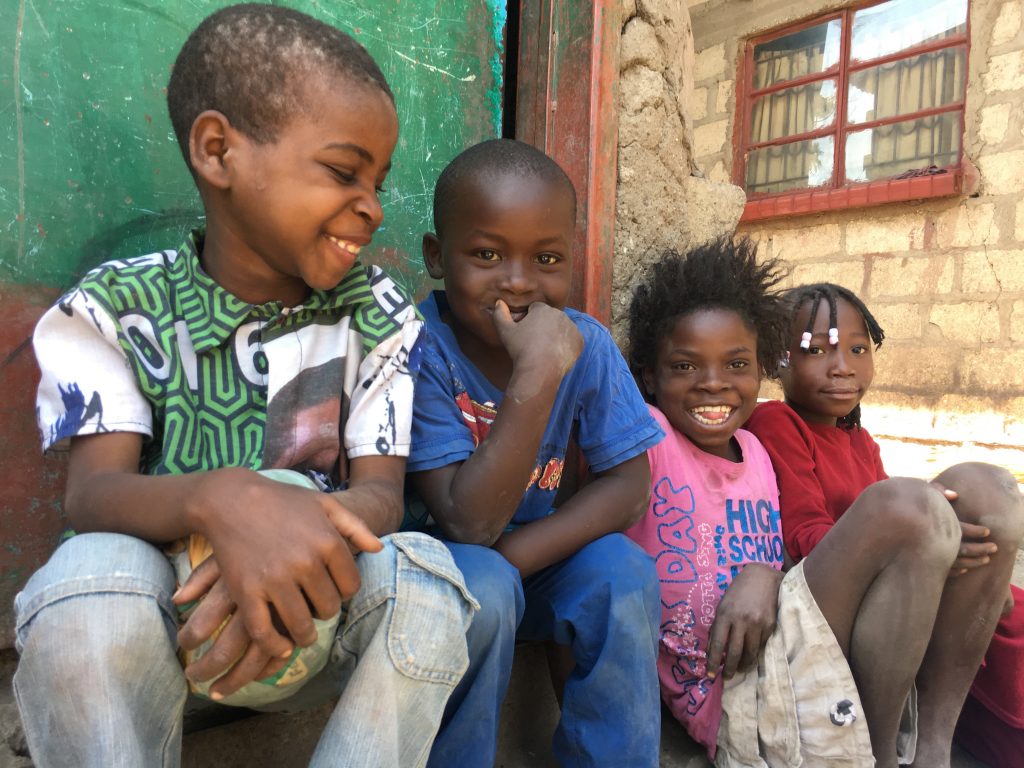In our last blog post, we explored the learnings from user research that was carried out for a mobile health service in Zambia, discussing key considerations for its design. To use the service, users dial a short-code and listen to health voice messages by navigating through an Interactive Voice Response (IVR) menu. In this follow-up post, we are deep diving into the second piece of research that we conducted, to answer one specific question: What makes a good voice message in Zambia?
We spent five days in Zambia to prepare and conduct the fieldwork. We tested both in urban parts of Lusaka and travelled to the rural province of Macha, testing with men and women. Based on our findings, we have set out below the seven elements of a good health voice message in Zambia.
1. Person
A common thread across Zambia is the need for complete clarity. Any ambiguities creates confusion. In that spirit, people preferred messages that clearly state who the message is for (for example, ‘Mothers should give Vitamin A to children’ or ‘Farmers should weed their fields’). They did not like messages that addressed them directly (such as, ‘You should give Vitamin A to your child’ or ‘You should weed your fields’). People thought that these messages are confusing, because it’s not clear if ‘you’ was referring to them or someone else in the room.
2. Tone
We tested several variations of tone, from a serious, ‘the government announces’ style to casual, ‘best friend next door’ chatting. In the end, people preferred a neutral and friendly tone of voice to deliver the message. A serious tone was perceived as being too intimidating while the casual tone was not taken seriously.
3. Negative/Positive
People preferred negative messages (for example, ‘Mothers who do not give children Vitamin A can cause bad eyesight.’) as these appeared to be more serious, making clear the consequences of one’s actions. People did not like positive messages as much (such as, ‘Mothers should give Vitamin A to children, so that they have good eyesight.’), as they were seen as being optional only.
4. Hooks
We tested several hooks to start nutritional messages with. People really loved messages that started with ‘The best mothers give their children…’. It made them feel good, but people also felt that it creates the right kind of social pressure to encourage other mothers to follow the advice. They also like messages starting with, ‘Did you know that…’ because it gives messages a positive, educational feel.
5. Life benefits
When explaining why someone should do something, it’s important to communicate concrete life benefits instead of abstract medical benefits. For example, ‘Vitamin A will improve vision’ doesn’t mean all that much to people. However, ‘Vitamin A helps children to succeed in school’ clearly shows how someone’s life can get better by giving children Vitamin. A simply exercise of asking ‘But why does this matter?’ can help to find these life benefits. For example:
- Vitamin A will improve vision – But why does this matter?
- Because children can read better – But why does this matter?
- Because reading better will allow them to succeed in school
6. Accessibility
While it’s tempting to recommend an optimal diet, it’s important to keep in mind that accessibility to products is a challenge to many people, both financially and physically. For example, oranges might be a great source of Vitamin C, but they are out of reach for many people in rural Africa. Not only are oranges expensive, but buying them would require long travel to a town with a large market.
Instead, messages should explain how people can act upon recommendations at low cost. For example, leafy greens are another great source of Vitamin C that people can easily grow on their own. An appropriate message could look something like, ‘Leafy greens, such a spinach and chard, are a great source of Vitamin C. You can grow your own leafy greens for very cheap. To learn how to grow your own leafy greens, press 2.’
7. Food variety
Yes, Zambians love their Nshima, but people across country want to learn about different foods that they can eat. We are not talking about complicated recipes! Most people have learned how to cook staple foods from their mothers, who learned from their mothers. Even simple new variations with common ingredients can be exciting.
Marketing
Community radio is by far the most popular channel in Zambia. It’s often the only form of entertainment in rural areas. Many phones are primarily used as an FM receiver. When developing marketing campaigns for mHealth services, Community radio can be a powerful and cost-effective channel to promote services.
Our conclusions
As always, please keep in mind that these findings are for Zambia only. Zambia is a unique place and, while these learning should offer food for thought, they will not necessarily be true in other places. Importantly, we uncovered all of these insights with only five days of research and brought clarity to questions that our stakeholders had been discussing for years. Research does not always have to involve months of planning and implementation. Often, a few days of testing with end-users can save months or even years of uncertainty and offer a clear and confident product roadmap forward.


